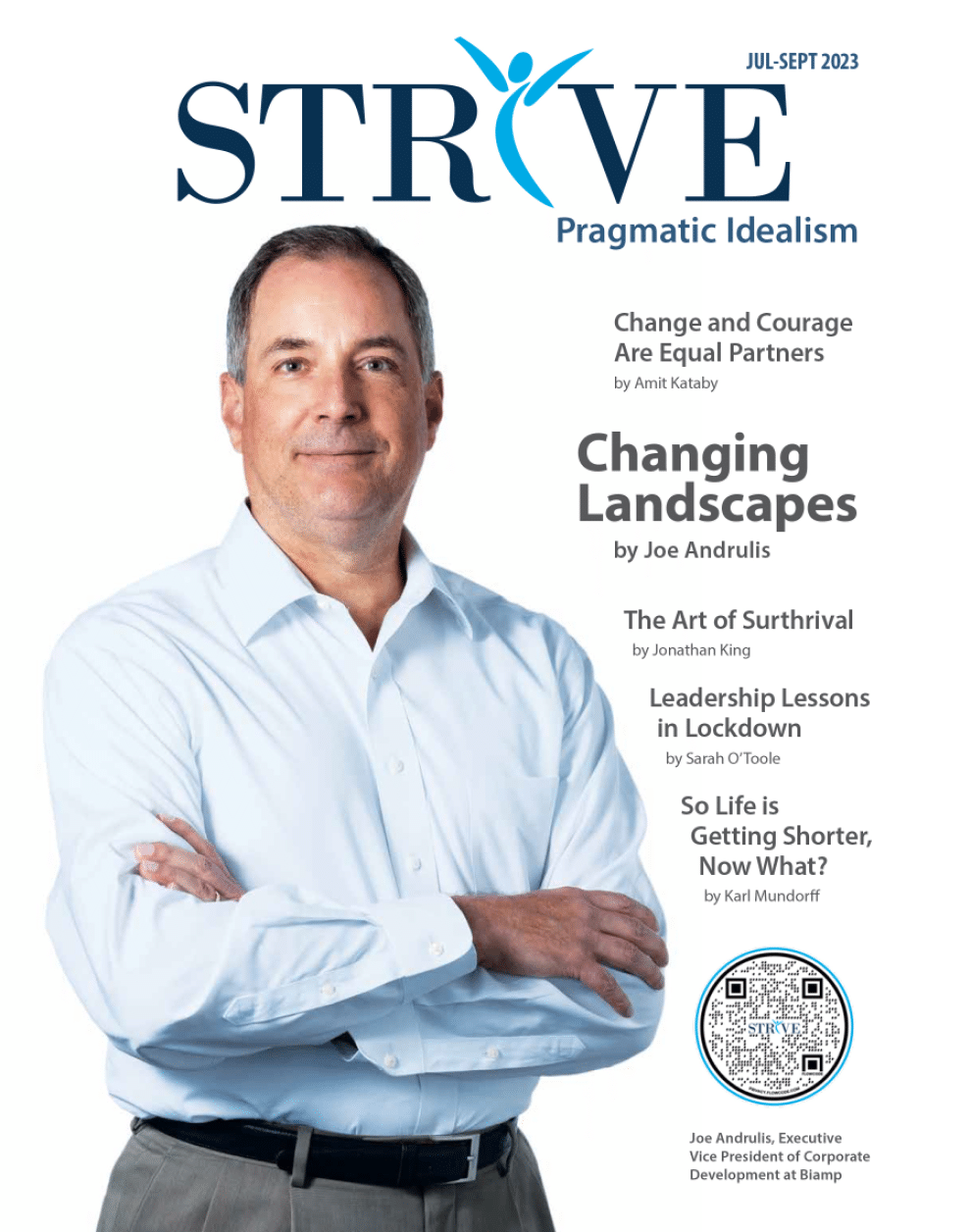
I have never considered myself an innovator. In fact, as a young musician, I frequently found myself one step behind the curve when it came to creating the next cool sound. During the formative years of my professional career, I was constantly told there are very few new ideas and more regurgitation and repackaging of old ones. So, my creative motif became one of making what already existed better. That was until what I wanted to make better didn’t exist.
I began my journey to innovation in 2005 when I opened Buzzbizz Studios. It was a recording studio and marketing firm for working musicians. As a veteran musician, I wanted to make sure no new recording artist had to go through the terrors of what I experienced during my 15-year part-time career. Of course, it only took about one year to realize that making a living off starving musicians was a bad business proposition. So, I pivoted to what paid the bills throughout my musical career and focused the marketing of my media production services on small, locally owned businesses. The company is now 21 employees strong and known as Buzzbizz Creative.
In 2010 I decided to add Search Engine Optimization (SEO) to the list of services Buzzbizz Creative offered. SEO is the practice of optimizing websites in a manner that is favorable to search engines like Google in an effort to be listed on the first page for search terms profitable to one’s particular product line or service. I adopted the service because there were no reliable and local options to refer my website development clients at the time. In 2010, SEO was still what many called Voodoo Magic and not necessarily understood by small companies. The basics philosophy was simple – the higher you rank the more traffic to your site sees from the search engine – but the execution at the time was spotty and expensive. My goal was to create a system that would create substantial results without an exorbitant cost to the business owner.
For the first four years, our process and outcomes were fine tuned to a point that we were actually performing ourselves out of a job once we obtained the target rankings for our clients. This was because that even with top listings in the most profitable keyword terms, clients were not getting more business. Basically, the clients didn’t care that they were number one in their target terms if they didn’t see an increase in sales.
In 2014, I started to research what other SEO professionals were doing about this issue. Come to find out, many of those I interviewed said their job was to get rankings for clients’ websites and to make sure their Google AdWords campaigns were getting clicks. It seemed to be common place to expect high client attrition because the clients couldn’t see the value of their SEO efforts. They chalked it up to the ignorance of the entrepreneur and there wasn’t enough time to educate each one on the value of SEO. I chalked it up to internet geeks not understanding the marketing aspect of what they did for clients.
On the flipside, I interviewed social media experts to see how they worked with SEO professionals to create synergy in the digital marketing realm. To my surprise, not one company or freelancer I spoke to had collaborated with an SEO firm to further the digital marketing efforts of their mutual clients. It seemed that the techy and creative elements in digital marketing were siloed.
During the same timeframe, Google started to incrementally unveil what I now recognize as the “engagement initiative.” Google’s focus became more and more about how visitors interacted with websites after they clicked through than merely just getting the click through from the search engine. At the same time, social media platforms like Facebook and YouTube were starting to become recognized as search engines themselves. Google, Yahoo, and Bing were starting to give weight to this and I started to believe that the success of social media campaigns was becoming intertwined with the strength of SEO initiatives. This realization drove me to create my innovation, Digital Engagement Optimization.

Digital Engagement Optimization (DEO) symbolizes the refocusing of digital marketing efforts to not only integrate social media marketing with SEO efforts, but to also take SEO one step further by focusing specifically on visitor interaction with each website. I knew people already did this, but mostly with very large websites that had significantly more traffic than the local business websites we dealt with on a regular basis and usually not specifically tied to their search engine ranking. I created a four-pronged approach that allowed the digital marketers and SEO specialists flexibility to focus on what would be most profitable for the client at any given time.
The challenge of this innovation was to orchestrate a scalable process that allowed both techies and creatives to successfully work together on the same campaigns. After several iterations of team composition and systematic strategies in both execution and measuring success, we created a brand new digital marketing platform that predictably outperformed any other product on the market. Comparing 40 case studies in 2016, we garnered 100% success in three key performance metrics and increased client retention past one year from 50% to 85%. With a 92% of our clients confirming that they saw sales growth from our DEO efforts, I knew my innovation had come to fruition.
One case study was a commercial laundry equipment company. It is a locally owned firm who did business the old-fashioned way, face to face. The founders were starting to get pressure from competitors from in the northwest. They realized that their core clientele was starting to research more on their own via the internet rather than coming to them for advice. It was time for them to fully embrace the 21st century and get on board with digital marketing.
We started to work with this company in the early stages of implementing the DEO platform. As early adopters, their management was very helpful in letting us know what was important to them–sales. Growth was slow, but steady, and within a few years we were able to outperform their largest national competition in AdWords campaigns and search engine rankings. With the increased traffic, we were able to also increase how many people were contacting them after visiting the site (conversion rate). In the last half of 2016, they reported that $500,000 of their sales could be directly contributed to our DEO efforts. This equated to roughly a 2,700% return on investment. Needless to say, they are raving fans.
The success of DEO came from many years of tenacious dedication and reluctance to accept the status quo. Even after winning the Visionary Marketer of the Year Award from the American Marketing Association for my innovation, I wasn’t satisfied. I felt to be truly successful, DEO needed to prove itself both at a national level and at scale. These two goals started the second phase of the innovation process – being more innovative.

Phase two of DEO, or DEO 2.0, would need to answer two questions. First, how do we make the websites of small businesses with limited resources competitive on a national or even global scale? Secondly, how do I scale this human resource heavy process to a point where it will be competitive with national digital marketing programs? The first question has since been answered and has proven itself multiple times over. The latter is a continuing challenge, one that pushes more innovation to the product and makes it even better for current clients.
I used to think innovative ideas needed to be world changing, and I mean global. But with the creation of DEO, I have found that innovation can be local, changing the way one person sees the world around them. I also used to think that the process was linear. With my continued quest to take my process national, I have come to understand that innovation is a never-ending journey.
Today, I see the world around me differently. I have confidence that I can impart change in my industry even though I own a small creative agency in the fifth least populated state in the union. It comes down to perspective and commitment to never accepting the status quo. I don’t know what the next 15 to 20 years will bring to my career as an entrepreneur. I do know it will be much more significant as a happenstance innovator than it would have been if I had simply followed the lead of others. Therefore, my challenge to you is this: use your intuition, use your expertise and don’t be afraid to create something new.
This article first appeared in the July 2017 STRIVE Magazine.
About the Author
Bringing a “never say die” attitude to everything he does, Buzz founded Buzzbizz Creative in 2005 after serving in the United States Air Force for 10 years. He blends over 25 years of marketing experience with decades of world travel to create a unique knack for seeing unexplored perspectives when it comes to marketing.
Mr. Buzinski is an Alaskan Journal of Commerce ‘Top Forty Under Forty’ alumni. He has been recognized by the Anchorage Chamber of Commerce as a Gold Pan Award recipient for entrepreneurial excellence. In 2015 Michael was named the American Marketing Association’s Marketer of the Year and 2016 Innovative Marketer of the Year for the Alaska Chapter.














































